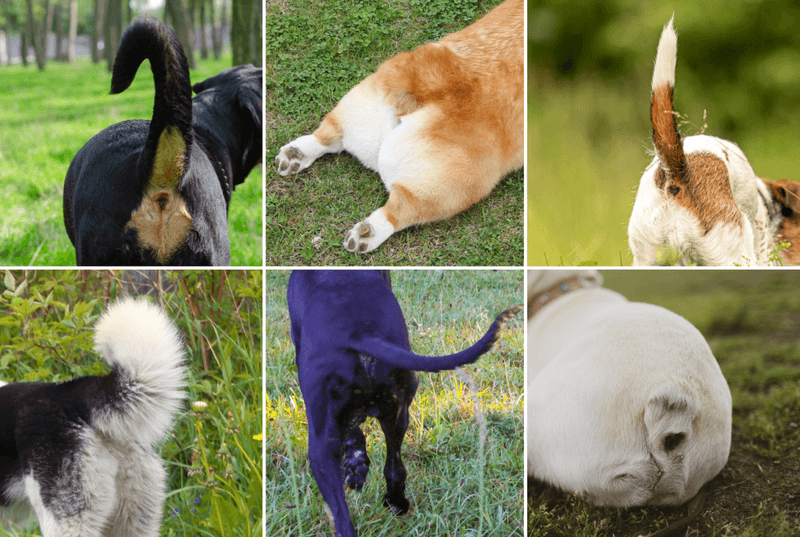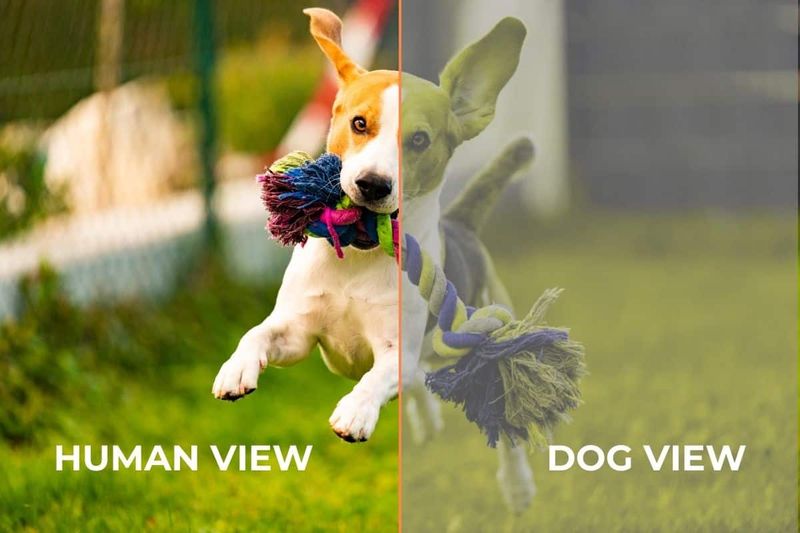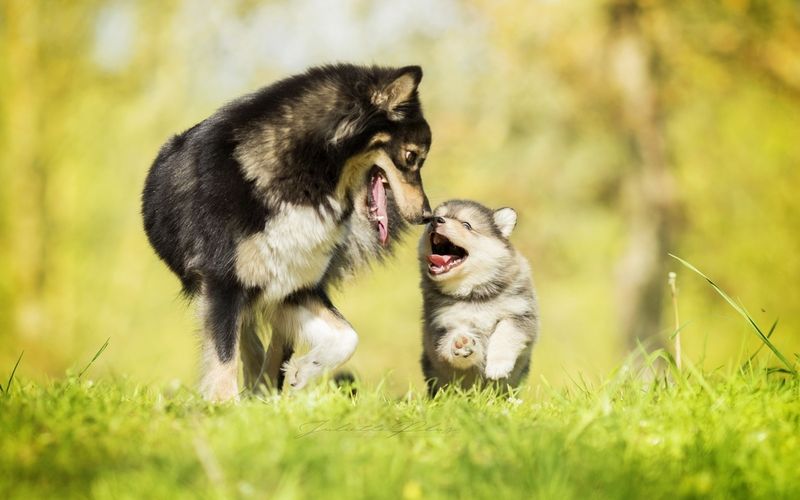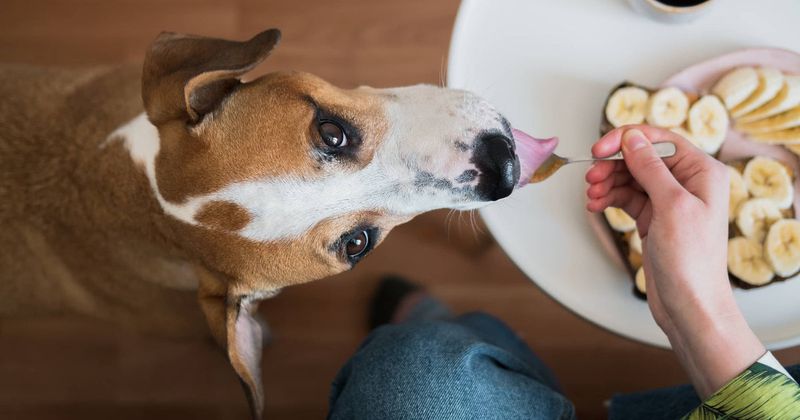Dogs are often surrounded by myths and misconceptions that can affect how we understand and care for them. From outdated beliefs about their behavior to misunderstandings about their needs, these myths can lead to confusion and misinformation. Veterinarians are stepping forward to debunk these myths, offering clarity and insights that promote better understanding and healthier relationships with our canine companions. In this article, we will explore 16 common dog myths that many still believe and unveil the truth behind them.
A Wagging Tail Means a Happy Dog
The sight of a wagging tail might bring a smile, but it doesn’t always signal happiness. Tail wagging is a complex language. Dogs use it to express various emotions, from excitement to anxiety. The position, speed, and direction of the wag can convey different feelings.
For example, a high, stiff wag might indicate alertness or aggression, while a low, slow wag could show uncertainty. Understanding these nuances helps in interpreting a dog’s true mood. So next time you see a wagging tail, look closer – it might hold a different story than you’d expect.
Dogs See in Black and White
Have you heard that dogs only see the world in black and white? This myth has been around for ages, but it’s not entirely true. While dogs don’t see the full spectrum of colors that humans do, they aren’t limited to black and white.
Dogs can perceive shades of blue and yellow, making their world more colorful than we once believed. Their vision is adapted for low-light conditions, perfect for dawn and dusk activities. Understanding how dogs see can enhance the way we interact with them, enriching their environment with colors they can enjoy.
A Cold, Wet Nose Means a Healthy Dog
The old adage that a cold, wet nose is a sign of good health persists, but it’s not a definitive indicator. A dog’s nose temperature and moisture can vary due to several factors, such as weather or recent activity.
While a cold, wet nose might be typical, a warm, dry nose isn’t necessarily a red flag. Some dogs have naturally dry noses, and it can change throughout the day. Monitoring other signs, like appetite and energy levels, is more crucial in assessing a dog’s health. So, don’t rely solely on the nose – look at the bigger picture!
Dogs Age Seven Years for Every Human Year
The belief that dogs age seven years for every human year is oversimplified. Dogs age rapidly in their first two years, reaching maturity faster than humans. After that, the aging process slows down and varies with breed and size.
Smaller breeds often live longer than larger ones, leading to differences in the aging process. This myth doesn’t account for these variations, so understanding a dog’s specific breed and health can provide a more accurate insight into its age. Age is a nuanced concept in dogs, not a simple calculation of seven human years.
You Can’t Teach an Old Dog New Tricks
The adage ‘You can’t teach an old dog new tricks’ suggests a limit to learning in later life stages, but this isn’t true. Older dogs can learn new behaviors and skills with patience and positive reinforcement.
Their cognitive abilities remain sharp, and training can offer mental stimulation and bonding opportunities. Consistency and understanding are key to success. While older dogs might require more time and gentle encouragement, their capacity to learn and adapt remains intact. Age shouldn’t be a barrier to training, and every dog can benefit from ongoing education, regardless of age.
Dogs Don’t Recognize Themselves in Mirrors
When a dog encounters a mirror, it often sparks curiosity rather than self-recognition. Dogs primarily rely on smell and sound to understand their environment, making visual self-recognition less relevant.
Instead of recognizing themselves, dogs may see a mirror image as another dog or simply an intriguing object. This doesn’t mean they’re unaware of their identity; they just perceive it differently. Understanding this aspect of canine perception helps us appreciate their unique sensory world, where sight plays a different role compared to ours. Mirrors remain a fascinating, if perplexing, aspect for dogs.
Dogs Eat Grass When They’re Sick
Ever watched a dog munch on grass and wondered if it’s feeling unwell? Many believe dogs eat grass to induce vomiting when they’re sick. However, this isn’t always true. Most dogs eat grass simply out of curiosity or enjoyment. It’s a natural behavior that has more to do with their dietary habits and less with illness.
Some dogs just like the texture or taste. Veterinarians suggest that while occasional grass eating is normal, persistent behavior may indicate a dietary imbalance. So, while grass munching isn’t necessarily a sign of sickness, monitoring the frequency can be wise.
All Dogs Love to Fetch
The image of a dog joyfully fetching a ball is iconic, yet not universal. While some dogs thrive on the game of fetch, others may show no interest. Breeds with retrieving instincts, like Labradors, often enjoy this activity, but it’s a personal preference.
Dogs have unique personalities and interests, just like humans. Forcing a dog to fetch if it’s uninterested can lead to stress or confusion. Recognizing and respecting a dog’s individual preferences enriches the bond between owner and pet, making playtime enjoyable and tailored to their interests.
Dogs Can’t Eat Human Food
The notion that dogs can’t eat human food is misleading. While certain human foods are harmful, many can be safely shared in moderation. Foods like cooked chicken, carrots, or rice can be nutritious additions.
It’s crucial to avoid toxic foods like chocolate, grapes, and onions. Consulting with a veterinarian ensures that any human food offered is safe and beneficial. Understanding these nuances allows for shared meals that enhance the pet-owner relationship, keeping the dog’s health and happiness in mind. A balanced approach to feeding fosters well-being.
Dogs Only Wag Their Tails to Communicate
Tail wagging is a well-known form of canine communication, but it’s not the only one. Dogs use a plethora of body language cues to express themselves, from ear positioning to body posture. Understanding these signals provides a clearer insight into their emotions and needs.
For example, a dog might lower its body to show submission or raise its ears to demonstrate alertness. Tail wagging is just a piece of a complex communication puzzle. Exploring these diverse cues helps in decoding a dog’s feelings and strengthens the human-animal connection.
Dogs Shouldn’t Sleep in Your Bed
The debate over whether dogs should sleep in bed with their owners is ongoing. While some argue it could lead to behavioral issues, many find comfort in sharing sleeping space.
Studies have shown that sleeping with a dog can provide warmth and a sense of security. It’s a personal choice best made considering the dog’s behavior, health, and owner’s comfort. Establishing boundaries ensures harmony, allowing both to enjoy restful sleep. Sharing a bed with a dog can enhance the bond, but it’s essential to assess individual situations.
A Dog’s Mouth is Cleaner Than a Human’s
The idea that a dog’s mouth is cleaner than a human’s is a widespread myth. Both contain bacteria, but they’re different. A dog’s mouth hosts bacteria suited to its diet and lifestyle, while a human’s mouth contains germs suited to theirs.
Neither is “cleaner” in the traditional sense. Practicing good hygiene, like hand washing after pet interaction, is wise. Understanding this helps in appreciating the biological differences rather than making inaccurate comparisons. The myth persists, but clarity promotes better hygiene practices and realistic expectations.
Dogs Need to Chew Bones for Healthy Teeth
The image of a dog chewing on a bone is classic, but not all bones are safe. Chewing bones can pose risks like tooth fractures or digestive issues. Safe alternatives like specially designed chew toys or dental treats provide similar benefits without the hazards.
These options help maintain dental health while entertaining the dog. Consulting with a veterinarian ensures that chosen chew items are appropriate and beneficial. This myth overlooks the potential dangers, but understanding safer options protects the dog’s health, ensuring a happy and healthy smile.
Dogs Don’t Feel Guilt
Ever caught a dog with an “oops” expression, and thought it looked guilty? While dogs display behaviors resembling guilt, they’re typically responding to human cues rather than feeling remorse.
Their understanding of human emotions guides their responses. Dogs are keen observers, and their ‘guilty’ look is often a reaction to a perceived change in a human’s mood or tone. Recognizing this helps in addressing behavioral issues more effectively. The concept of guilt in dogs is more about human interpretation than their actual emotional state.
All Dogs Hate Baths
The belief that all dogs dread baths isn’t universally true. While some might resist water, others find bath time enjoyable. Breed, past experiences, and individual preferences play significant roles in shaping a dog’s attitude towards baths.
Positive associations and gentle handling can transform a dreaded chore into a pleasant experience. Understanding a dog’s unique relationship with water helps in creating a more enjoyable bath routine. Personalizing the experience to suit the dog’s comfort level encourages relaxation and cooperation, ensuring cleanliness without stress.
Dogs Always Protect Their Owners
The idea that dogs instinctively protect their owners is romantic but not always accurate. While some breeds have protective instincts, not all dogs are inclined to guard. A dog’s response depends on temperament, training, and socialization.
Trusting the bond between dog and owner plays a crucial role in shaping protective behavior. Recognizing each dog’s personality and respecting its instincts fosters a healthy relationship. While many dogs are loyal companions, assuming they will protect without proper training can lead to misunderstandings. Building a trustworthy relationship enhances mutual understanding and safety.
















